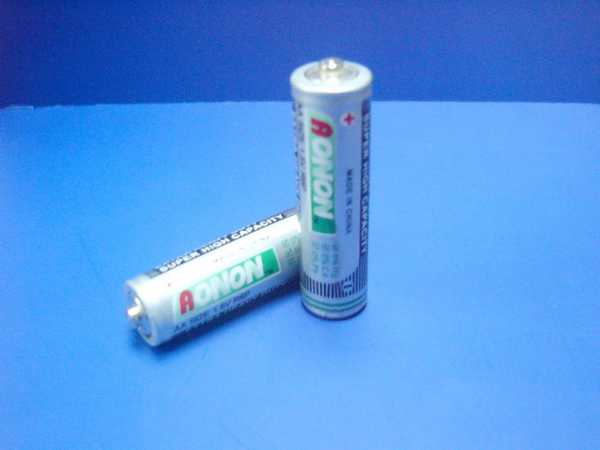What is lithium battery?
If you are looking for high-quality products, please feel free to contact us and send an inquiry, email: brad@ihpa.net
Russia's insistence on paying for Russian gas in rubles has rattled European countries: Greece held an emergency meeting of suppliers, the Dutch government would urge consumers to use less gas, and the French energy regulator told consumers not to panic. Russian gas meets one-third of Europe's annual energy needs.
Russia said they could expand their demand for ruble payments for other commodities, including oil, grain, fertilizer, coal, and metals, which raised the risk of recession in Europe and the US.
Moscow is expected to unveil its ruble payment plan in early April, but it said it would not immediately ask buyers to pay for gas in rubles.
Western countries have said paying in rubles would be a breach of contract, and renegotiation could take months or longer. This uncertainty has pushed commodity market prices higher.
The supply and prices of other commodities like the lithium battery could also be affected.
Lithium battery is a kind of battery that uses lithium metal or lithium alloy as positive/negative electrode material and uses non-aqueous electrolyte solution. In 1912, the lithium metal battery was first proposed and studied by Gilbert N. Lewis. In the 1970s, M. S. Whittingham proposed and began to study lithium-ion batteries. Due to the very active chemical properties of lithium metal, the processing, storage and use of lithium metal have very high environmental requirements. With the development of science and technology, lithium batteries have become the mainstream.
What are the types of lithium batteries?
Lithium batteries can be roughly divided into two categories: lithium metal batteries and lithium ion batteries. Lithium-ion batteries do not contain lithium in the metallic state and are rechargeable. The fifth generation of rechargeable batteries, lithium metal batteries, was born in 1996, and its safety, specific capacity, self-discharge rate and performance-price ratio are better than lithium-ion batteries. Due to its own high technical requirements, only companies in a few countries are producing such lithium metal batteries.

What is the working principle of lithium battery?
Lithium Metal Batteries:
Lithium metal batteries generally use manganese dioxide as the positive electrode material, metal lithium or its alloy metal as the negative electrode material, and use a non-aqueous electrolyte solution.
Discharge reaction: Li+MnO2=LiMnO2
Lithium Ion Battery:
Lithium-ion batteries generally use lithium alloy metal oxides as positive electrode materials, graphite as negative electrode materials, and use non-aqueous electrolytes.
The reaction at the charging positive electrode is
LiCoO2=Li(1-x)CoO2+xLi++xe-(electron)
The reaction that takes place on the charging negative electrode is
6C+xLi++xe- = LixC6
Rechargeable battery total reaction: LiCoO2+6C = Li(1-x)CoO2+LixC6
What are the cathode materials of lithium batteries?
Positive electrode material: There are many optional positive electrode materials. At present, the common positive electrode active materials in the market are: Lithium cobalt oxide, lithium manganate, lithium nickelate, lithium iron phosphate, nickel-cobalt-aluminum ternary, nickel-cobalt-manganese ternary
Positive electrode reaction: Lithium ion intercalation during discharge, and lithium ion deintercalation during charging. When charging: LiFePO4 → Li1-xFePO4 + xLi+ + xe- When discharging: Li1-xFePO4 + xLi+ + xe- → LiFePO4.
What are the negative electrode materials of lithium batteries?
Negative material: graphite is mostly used. In addition, lithium metal, lithium alloy, silicon carbon anode, oxide anode material, etc. can also be used for the anode.
Negative reaction: lithium ions are deintercalated during discharge, and lithium ions are intercalated during charging.
When charging: xLi+ + xe- + 6C → LixC6
On discharge: LixC6→ xLi+ + xe- + 6C
High-quality lithium battery anode material manufacturer
Luoyang Moon & Star New Energy Technology Co., LTD, founded on October 17, 2008, is a high-tech enterprise committed to developing, producing, processing, selling, and technical services of lithium-ion battery anode materials. After more than ten years of development, the company has gradually developed into a diversified product structure with natural graphite, artificial graphite, composite graphite, intermediate phase and other harmful materials (silicon-carbon materials, etc.). The products are widely used in high-end lithium-ion digital power and energy storage batteries.
If you are looking for graphite or lithium battery anode material, click on the needed products and send us an inquiry:sales@graphite-corp.com.
Cancer cells can "stretch out a big hand" and take away the mitochondria of immune cells. The Harvard Medical School research team cultured mouse and human breast cancer cells and immune cells, such as killer T cells, and used field emission scanning electron microscopy (FESEM) to observe the relationship between cancer cells and immune cells. interactive. Interestingly, they found that cancer cells stick out long nanotubes, typically within 100-1000 nanometers in diameter, each of which connects to multiple immune cells along the way. The researchers used the drug L-778123, which inhibits the formation of nanotubes, for treatment. The higher the concentration of L-778123, the better the treatment effect.
Product name are used in various high-tech fields, so the market demand for lithium battery will continue to rise. We are a quality supplier of lithium battery, please feel free to contact us.
Inquiry us




